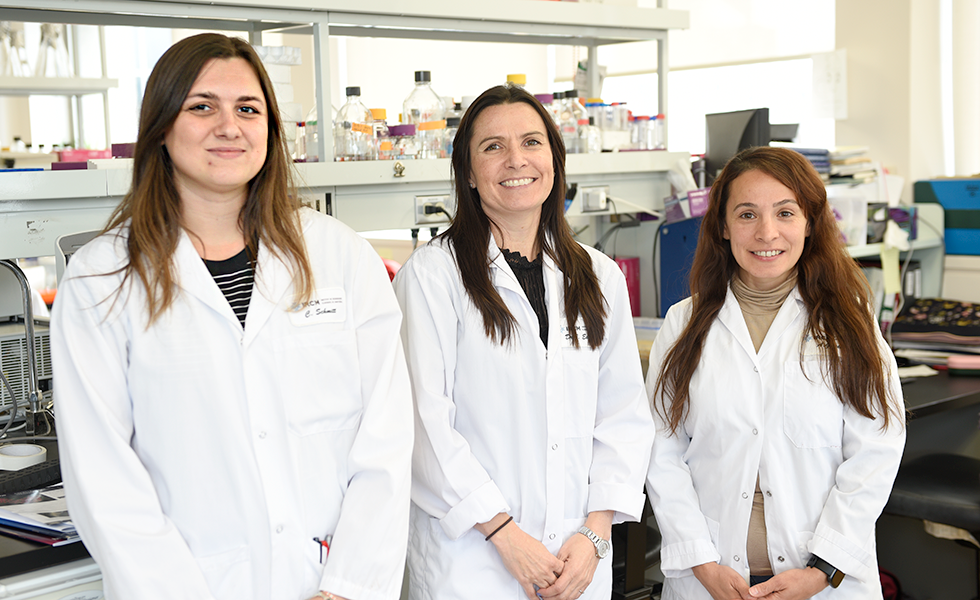
IRCM study paves the way for new early diagnostic and therapeutic options.
Dr. Jennifer Estall’s team at the Montreal Clinical Research Institute (IRCM) recently released a new study, bringing new knowledge on two major metabolic diseases: Diabetes and steatotic liver disease, commonly known as fatty liver disease.
Published in the scientific journal Diabetes, the study sheds light on how these diseases impact each other, while identifying potential new biomarkers and targets for therapy.
In depth
Led by first author Aysim Gunes, a Research Associate in the Estall lab, the study revealed the abnormally high presence of proteins called sIL-6R and sgp130 in the blood of patients with steatotic liver disease, and their levels were even higher in people living with diabetes. The team was able to establish that high sugar and lipids - which are found in diabetes - trigger different types of liver cells to produce this these proteins, which are involved in controlling inflammation. Most strikingly, the study revealed that sgp130 concentration in bloodstream is very good indicator of liver damage in both men and women, suggesting this protein could also be a good circulating biomarker of liver disease. Current biomarkers for steatotic liver disease only detect the later stages of liver disease, and many of these perform differently in men versus women.
“We have a long-standing interest in understanding how steatotic liver disease is linked to type 2 diabetes. Our new study suggests a possible explanation for why fatty liver disease is more prevalent in people living with diabetes, and why having diabetes seems to worsen metabolic liver disease. It also provides a promising new way to detect liver damage in patients with metabolic disease” explained Dr. Estall, director of the Molecular Mechanisms of Diabetes Research Unit at the IRCM.
Our discovery of a new and efficient biomarker of liver damage in earlier stages of steatotic liver disease could pave the way for new non-invasive tests to diagnosis the disease earlier, said Dr. Gunes.
About steatotic liver disease
Steatotic liver disease is a metabolic health condition that impacts 25 % of the general population by creating a build-up of fat and scar tissue in the liver. While showing few symptoms, the disease is known to cause significant damage to the liver over time, ultimately impacting drug metabolism and toxin detoxification, as well as increasing cancer risk. With no sensitive ways to measure the liver damage in its early stages, the disease is difficult to diagnose early on, when it is still reversible through diet, exercise or medication.
Acknowledgement
We would like to thank the International Development Research Centre (IDRC), the Canadian Liver Foundation (CLF), the Merck, Sharp and Dohme Corp and the University de Montréal for funding this research. We also thank the numerous collaborators who made this study possible. The project involved a large team of researchers, clinicians, and patient partners spanning multiple research institutes, provinces (Quebec and Ontario) and countries (Canada, Turkey, Israel).




